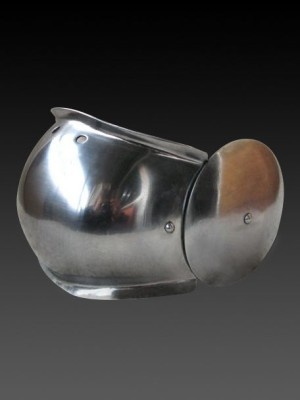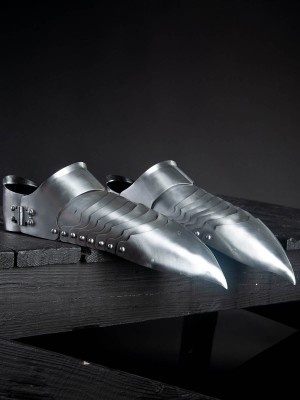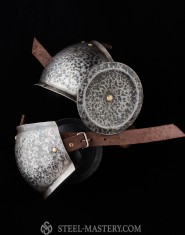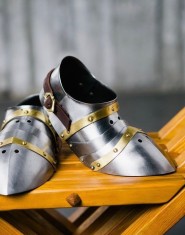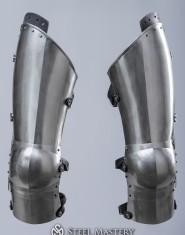Riguardo Protezione metallica per gambe
Welcome to the section “Leg protection”. Different types of medieval knee caps, greaves, sabatons and full leg defense are presented here.
Plate legs and other defense parts handcrafted and made-to-measure. They are being crafted according to the original defense, which is kept in the museums or shown in the old manuscripts.
Few easy steps are required to order such custom armour:
- Open the item you like;
- Choose type and thickness of metal;
- Select rivets and buckles (steel or brass);
- Add the wished decoration;
- Choose the method of finish treatment (satin or mirror polishing, blueing).
If any difficulties arose, please contact our manager. We’ll help you to define your size, required model and its complement.
All models of plate shoes and legs are perfect for bohurts, combat, tournaments of medieval fencing, historical festivals and participation in the reenactment events. Depending on the complement, they are compliant to the standards and rules of such social movements, as SCA (The Society for Creative Anachronism), HEMA (Historical European Martial Arts), HMB (Historical medieval battles).
Once you chose required options, add item to the cart and make a payment. After that, manager will contact you with measurement request and specification of order’s details.
If there is no required element of protection in this section, we can make it individually for you. Just send picture with detailed description to [email protected]. Then we could quote you and discuss details of order.
Metal spherical knee caps had appeared in the XIII century. They were fixed with strings or belts under the knee, and were worn over the leather or padded chausses. In time, shape of such caps were modified a bit. They got additional protection – rondel (a plate of round shape). Rondel could be plain or chased. It covered the under-knee area against the blow. Knee cap of Milanese armour had a rondel of shell shape.
Starting the XV century, most part of French and Italian knights began to wear plate greaves. Front and back parts of such armour were joined with hinges. On the calf, they were fixed with leather belts.
German style leg defense had the similar design. Due to such type of fixation and anatomical shape, plate greaves were comfortable for use. Half-greaves were popular as well. They were consisted only of one front segment.
Originally, hips protection consisted of metal parts (tasses) , which were attached to the belt. They were made to cover outer side of thighs only, as inner one was protected by horse saddle.
In the middle of the XV century, hips protection was combined with greaves into the one piece armour. Milanese leg protection had a smooth surface. But at the same time, Gothic style leg armour was ribbed, that enforced its stability and resistance.
Plate feet protection had appeared in the early XIV century. Metal shoes called sabatons and consisted of few joined segments. Mobility of such armour was of importance not only for dismount warriors, but also for horsemen, as there were easier to control breachy horse. Sabaton could be a separate part of knight’s outfit, or it could be attached to the plate greaves.
At first, plate shoes had short pointed toes. But following the Burgundian fashion of the XIV-XV century, crafters started to make extravagantly long and narrow toes. Particularly, gothic-style sabatons had such typical shape. Toes were removable, so knight could unbuckle it when walking or during dismounted actions.
In the XV century, square toed sabatons replaced pointed plate shoes. They were called “Bear paw” or “Cow muzzle”. Only in a century, shape of plate footwear became close to the natural form of foot.

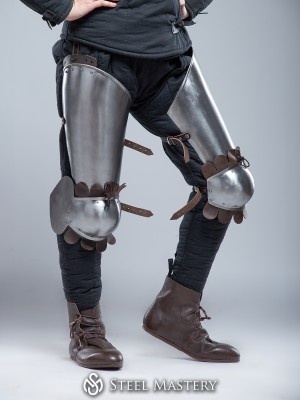
-0-5-0-1-5-300x400.jpg?v=1746523880)
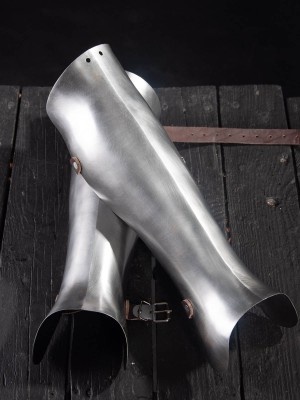

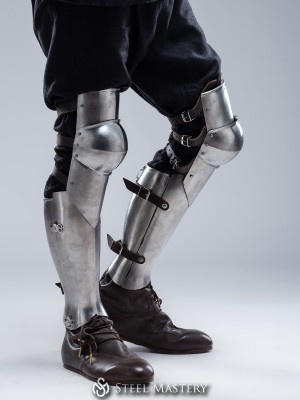
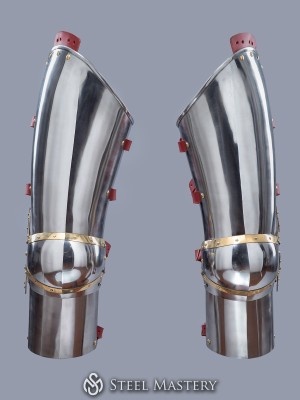
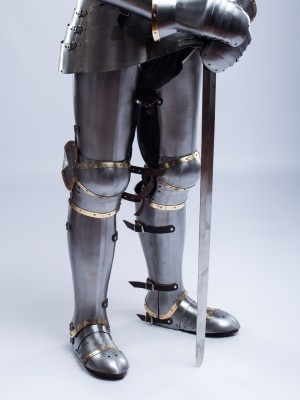
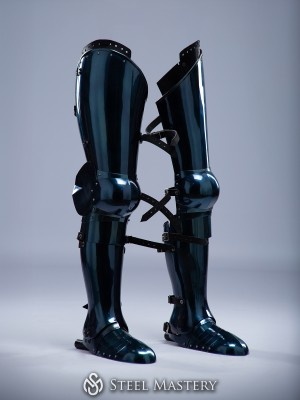
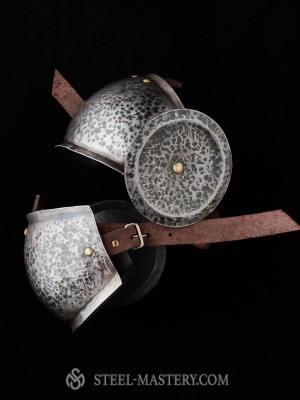
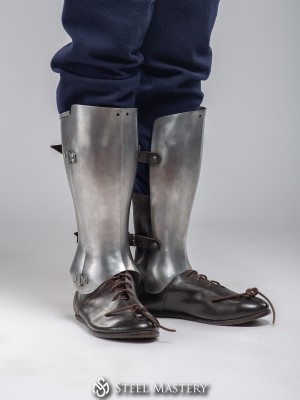
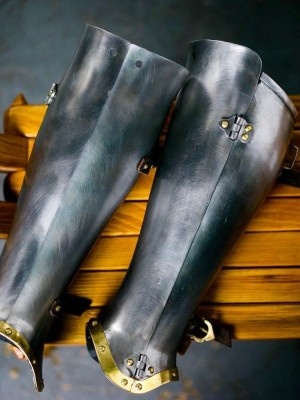
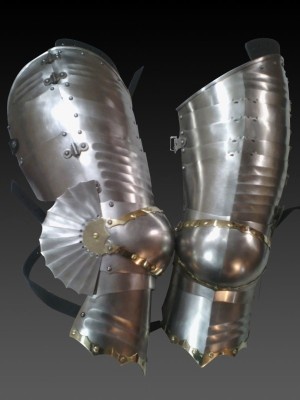
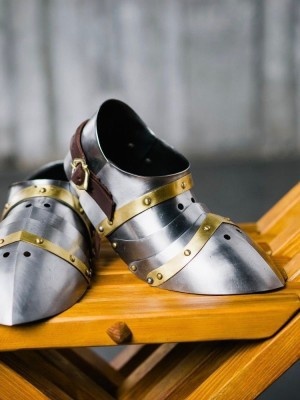

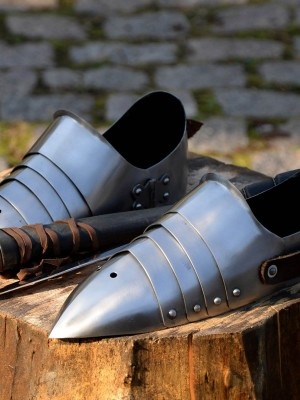
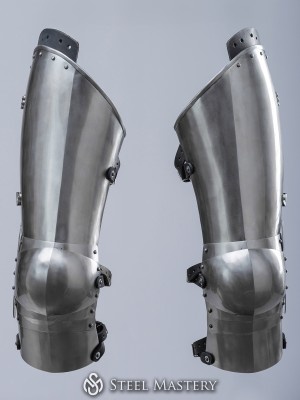

-0-5-0-1-5-300x400.jpg?v=1746523880)
